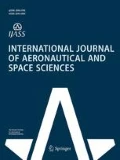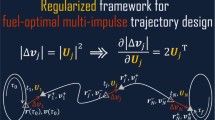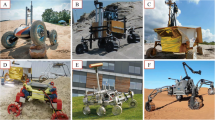Abstract
Herein, the characteristics of the Moon-to-Earth (M–E) trajectory satisfying the point return orbit (PRO) conditions are analyzed and optimized. A numerical three-step approach is proposed to serve as a useful tool to generate trajectory while preparing for real-world missions. To formulate the given problem, each step properly adapts different equations of motion with design parameters suitable to each step’s primary objective. Three- and N-body equations of motion are used as a basis, and PRO is constrained by the parking orbit at the Moon and Earth re-entry corridor associated with the re-entry position. Consequently, the major trans-Earth-injection (TEI) maneuver condition at the Moon is optimized together with the right ascension of the ascending node and the argument of the latitude. Moreover, the TEI maneuver magnitude with its execution date and required time of flight is optimized to form PRO. Adopting this three-step approach, the effect of the Moon’s relative motion with respect to the Earth to form the optimal TEI condition is clearly analyzed. In addition, direct insight on the TEI condition is obtained by expressing the M–E rotating frame, which is expected to save time and effort while generating initial guesses for TEI conditions.











Similar content being viewed by others
References
Song YJ, Lee DH, Bae JH et al (2018) Flight dynamics and navigation for planetary missions in Korea: past efforts, recent status, and future preparations. J Astron Space Sci 35(3):119–131
Berry RL (1970) Launch window and translunar, lunar orbit, and trans earth trajectory planning and control for Apollo 11 lunar landing mission. In: AIAA eighth aero sciences meeting, New York
Penzo PA (1961) An analysis of Moon-to-Earth trajectories. NASA-CR-132100
Sommer SC, Short BJ (1961) Point return from a lunar mission for a vehicle that maneuvers within the Earth’s atmosphere. NASA TN D-1142
Cicolani LS (1963) Orbits returning from the moon to a specified geographic landing area. NASA TN D-1652
Dallas SS (1963) Moon-to-Earth trajectories. In: Szebehely VG (ed) Celestial mechanics and astrodynamics: a selection of technical papers mainly on the AIAA astrodynamics conference, New Haven, pp 391–438
Shen HX, Zhou JP, Peng QB, Li HY (2012) Point return orbit design and characteristics analysis for manned lunar mission. Sci China Technol Sci 55:2561–2569. https://doi.org/10.1007/s11431-012-4969-4
Condon G (2007) Lunar orbit insertion targeting and associated outbound mission design for lunar sortie missions. In: AIAA guidance navigation and control conference and exhibit, Hilton Head
Sostaric RR, Merriam RS (2008) Lunar ascent and rendezvous trajectory design. In: 31th annual AAS guidance and control conference, Breckenridge
National Aeronautics and Space Administration (2019) Orion overview. https://www.nasa.gov/exploration/systems/orion/about/index.html (accessed 12 Mar 2019)
McNamara LW and Braun RD (2014) Definition of the design trajectory and entry flight corridor for the NASA orion exploration mission 1 entry trajectory using an integrated approach and optimization. AAS 14-094
Dawn TF, Gutkowski JP, Batcha AL et al (2018) Trajectory design considerations for exploration mission 1. In: 28th AIAA/AAS space flight mechanics meeting, Kissimmee
Li J, Gong S, Wang X (2015) Analytical design methods for determining Moon-to-Earth trajectories. Aerospace Sci Technol 40:138–149. https://doi.org/10.1016/j.ast.2014.10.016
Huang WD, Xi XN, Wang W (2010) Characteristic analysis and design of near moon abort trajectory for manned lunar landing mission. Sci China Technol Sci 53:3129–3137. https://doi.org/10.1007/s11431-010-4118-x
Peng QB, Shen HX, Li HY (2011) Free return orbit design and characteristics analysis for manned lunar mission. Sci China Technol Sci 54:3243–3250. https://doi.org/10.1007/s11431-011-4622-7
Feng F, Zhang YS (2018) Application and analysis of an improved multiconic method in trajectory design of the lunar south pole return mission. Proc IMechE Part G J Aerospace Eng 232(6):1063–1076. https://doi.org/10.1177/0954410017705896
National Aeronautics and Space Administration (2019) NASA Space Science Data Coordinate Archive. https://nssdc.gsfc.nasa.gov/nmc/spacecraft/display.action?id=1976-081A (accessed 11 Jan 2019)
National Aeronautics and Space Administration (2019) Lunar Exploration Timeline. https://nssdc.gsfc.nasa.gov/planetary/lunar/lunartimeline.html (accessed 11 Jan 2019)
Egorov VA (1958) Certain problems of moon flight dynamics. In: Russian literature of satellite, part I. International Physical Index Inc., New York
Standish EM (1998) JPL planetary and lunar ephemerides, DE405/LE405. Jet Propulsion Laboratory Interoffice Memorandum IOM 312.F-98-048
Roncoli RB (2005) Lunar constants and models document. JPL D-32296
Song YJ, Kim BY (2016) The effect of the Earth’s oblateness on predicting the shadow conditions of a distant spacecraft: applications to a fictitious lunar explorer. Adv Space Res 57:355–366. https://doi.org/10.1016/j.asr.2015.09.028
Graves CA and Harpold JC (1972) Apollo experience report: mission planning for Apollo Entry. NASA TN D-6725
Anderson JD (2015) Introduction to flight, 8th edn. McGraw-Hill, New York
Gill PE, Murray W, Sunders MA (2005) SNOPT: an SQP algorithm for large-scale constrained optimization. SIAM Rev 47:99–131
Braud NJ (1962) Earth to moon trajectory investigation for mission profiles involving a lunar patched orbit. In: Lunar flight study series, vol 3. MTP-AERO-62-84
Acknowledgements
This work has been provided by the BK21 plus through grant to Kyung Hee University, NRF-2014M1A3A3A02034761 and NRF-2016M1A3A9913306 programs the National Research Foundation (NRF) funded by the Ministry of Education and the Ministry of Science and ICT and Future Planning of South Korea.
Author information
Authors and Affiliations
Corresponding author
Additional information
Publisher's Note
Springer Nature remains neutral with regard to jurisdictional claims in published maps and institutional affiliations.
Rights and permissions
About this article
Cite this article
Song, Y., Song, YJ., Kim, KS. et al. Optimal Lunar Point Return Orbit Design and Analysis via a Numerical Three-Step Approach. Int. J. Aeronaut. Space Sci. 21, 1129–1146 (2020). https://doi.org/10.1007/s42405-020-00282-7
Received:
Revised:
Accepted:
Published:
Issue Date:
DOI: https://doi.org/10.1007/s42405-020-00282-7




